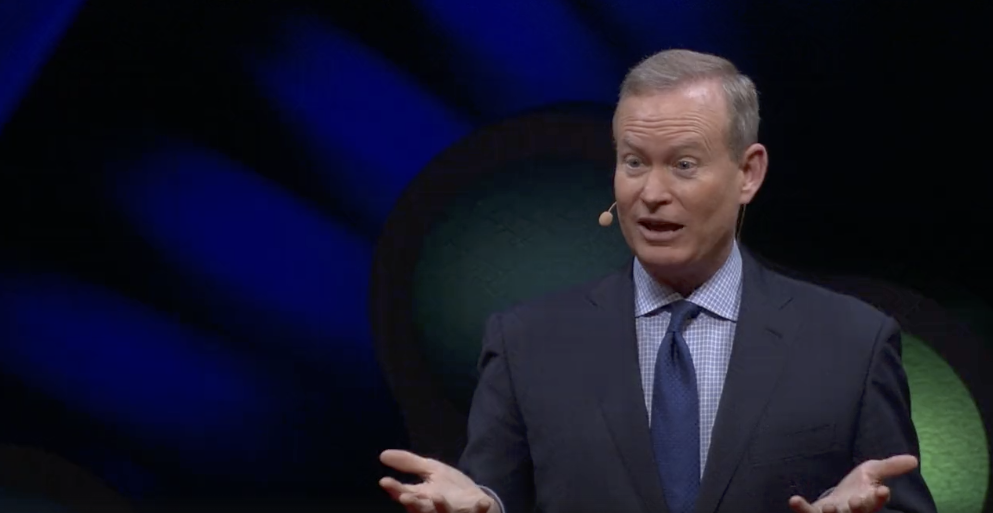Most communities are delighted to make any of the "top city" lists that have become ubiquitous in the media in recent years.
Travel + Leisure calls Houston the country's best city for foodies. Forbes says Boston is best city of singles. Glassdoor labels Raleigh the best city for jobs.
But in 2007, Oklahoma City found itself on a list nobody wants to be on. Men's Fitness called it one of the fattest cities in America.
The dubious distinction served as wakeup call for Mayor Mick Cornett, who acknowledged that at 220 pounds, he too was considered obese - and part of the problem.
First, he put himself on a diet that ultimately helped him shed 40 pounds. Then, in a press conference in front of elephants at the zoo, he declared he was putting the city on a diet too. His goal: to encourage Oklahoma City residents to live healthier lives and ultimately lose 1 million pounds (city leaders say they reached that mark in January 2012).
But Cornett said that the city's ballooning waistlines shouldn't have necessarily come as a shock, given the way the city developed over the years. "I would say, like a lot of Western cities, we faced urban sprawl," Cornett said. "We just built a city where health was not considered a priority."
Before the city realized it was in a health crisis, urban planning issues often didn't much attention. "It was almost something we joked about," Cornett said. "We joked that the streets were wide, and when you pushed the button at the cross walk, it would flash and you had to run. We didn't realize the repercussions."
As Cornett and city leaders encouraged people to get active and eat healthy, they also planned a systematic series of public works projects that would it easier to live a pedestrian-friendly, active lifestyle. At the time, that type of thinking was considered unusual in a place where cars are ubiquitous and pedestrians were rarely considered a priority.
"I don't think we ever made the connection between health and urban planning," Cornett said. "Once I connected the two, I saw everything differently."
That connection led to a city program known as MAPS 3, a version of a long-standing capital improvements initiative that added a one-cent sales tax to be spent on quality-of-life improvements within Oklahoma City. Other mayors had used the MAPS program for big projects before. But Cornett's spin on MAPS was that many of his projects would focus on pedestrian access or otherwise encourage physical fitness. From 2010 and 2017, the program is expected to raise $777 million.
Among the MAPS 3 projects under development are a new downtown public park and a street car line. The city will break ground on both next year. It's also funded expansions to the city's trails system and the construction of new sidewalks. Perhaps most interesting is the new state-of-the art whitewater and rowing racecourse that will be built in the Oklahoma River.
"For years, we'd instructed our civil engineers that their main job was to see how fast they could get a care from here to there, with really no other consideration," Cornett said. "Now we have a different perspective."
Cornett said he had to mount a public awareness campaign to get the buy-in needed to make those types of upgrades. "If it's the only place you've ever lived, you kind of assume this is the way life is," Cornett said. "You can't fix the problem if people don't know it exists." Once residents realized that the built-environment was hurting their health, he said, they were on board with making big changes.
He said cities should consider the economic benefits of pedestrian improvements as well. If companies want to attract top talent, they have to be located in a city where job candidates will actually want to live. "If you're going to attract highly-educated 20-somethings - which we're doing - you've got to have a strong urban core, with transit, that's walkable and has nightlife," Cornett said.
Oklahoma City's story has made Cornett a sought-after expert on the intersection between urban planning and public health. In 2010, Governing magazine named him a "public officials of the year." A TED talk he gave about his city's weight loss campaign has garnered more than 1.3 million views.
Cornett will discuss his city's transformation at a talk in downtown Houston sponsored by the Kinder Institute June 30.
Cornett is very familiar with Houston, due to his time as a sports broadcaster in nearby Bryan early in his career. He said Oklahoma City and Houston have similarities - sprawling geography, a political climate friendly to development and a boom-and-bust economy tied to oil. As a result, they can learn from each other. The new downtown park in Oklahoma City, for example, was heavily influenced by Discovery Green in downtown Houston. "We're a lot smaller," Cornett said. "But besides the size, there's more similarities than differences."

